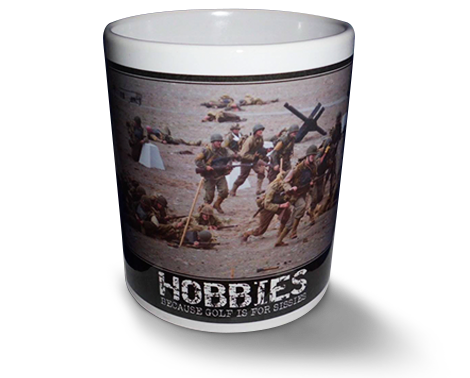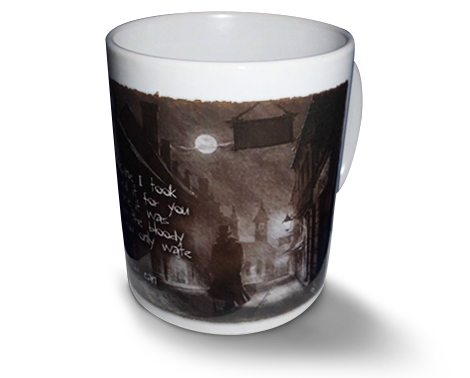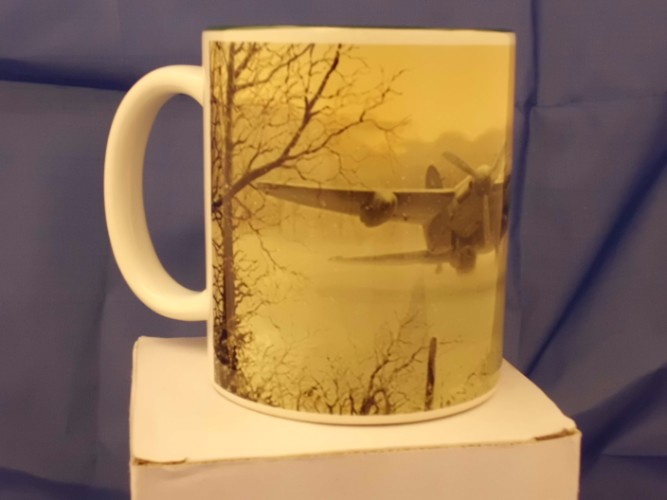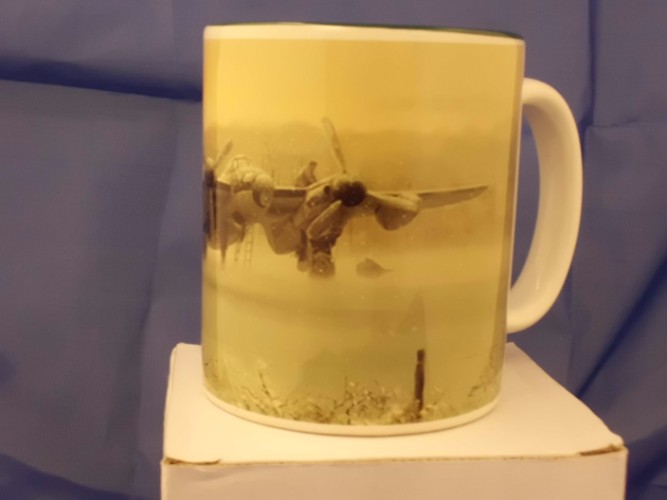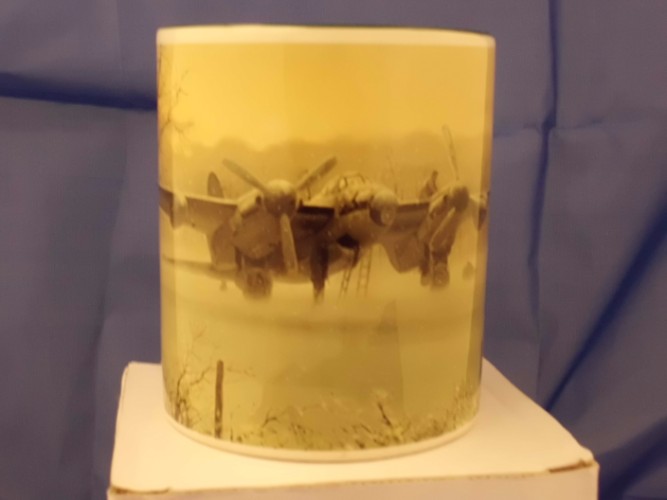Mosquito Plane collectors mug
11 oz dishwasher safe mug
It first flew at the end of 1941 and was first made known to the public after the successful raid by four of them on September 25th, 1942, on the Gestapo H.Q. in Oslo. When over Oslo with their bomb doors open, they were attacked by two F.W.190s which happened to be in the air when they arrived. One was shot down, but the others, with their bomb doors now closed, outpaced the F.W.190s, who gave up the chase 60 miles out to sea.
They had been used before this date to take “after bombing” photographs and on reconnaissance trips over Germany. Were used recently in a raid on the Phillips Radio Factory in Holland, and are constantly over the occupied countries and Germany.
Manufacturers: The de Havilland Aircraft Co. Ltd.
Type: British multi-seat long-range fighter-bomber developed from Mk.I reconnaissance aircraft.
Engines: Rolls Royce Merlins.
Speed: Secret. Mk.II (unofficial estimate over 400mph. The Mk.I has a maximum speed of 376mph and a cruising speed of 328mph).
Range: Secret (unofficial estimate of 1,500 miles).
Ceiling: Unknown.
Armament: 4 20mm cannon in nose and machine-guns, numbers unknown
Dimensions: Span 54ft 2in, length 41ft 2in, height 17ft 3in.
Construction: Wings, wooden structure, stressed plywood covering. Tail unit same. Decking covered with plywood. Fully retractable undercarriage.
Distinguishing features: High-wing, twin engine monoplane with simple tail unit and retractable undercarriage. The in-line engines are underslung, nacelles protruding slightly behind after the wing, and forward are in line with nose of fuselage. Wings have almost straight leading edge, with marked taper on trailing edge, small rounded tips. Elliptical tail-plane. Fin and rudder same shape as half the tail-plane.

